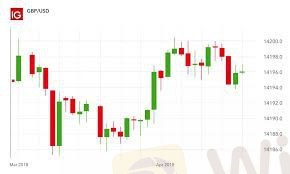
2025-04-28 17:17
IndustryAI Feature Engineering for Currency Movement Predi
#AIImpactOnForex
AI feature engineering for currency movement prediction models involves selecting, transforming, and creating features that help machine learning models predict currency price changes. This process is crucial because the success of prediction models depends largely on the quality and relevance of the features used.
Key steps in AI feature engineering for currency prediction include:
1. Data Collection: Gathering historical data on currency pairs, including price, volume, interest rates, geopolitical events, and macroeconomic indicators.
2. Time-Series Features: Generating time-based features such as moving averages, volatility, relative strength index (RSI), and other technical indicators commonly used in financial analysis.
3. Lag Features: Creating lag features to capture the temporal dependencies in currency movements, like previous day’s closing price or rolling windows for short- and long-term trends.
4. Sentiment Analysis: Incorporating sentiment analysis from news, social media, or economic reports to capture market mood, which can influence currency fluctuations.
5. Volatility and Risk Measures: Including volatility indices and measures of market risk as features to predict sudden currency movements.
6. Feature Selection and Dimensionality Reduction: Using techniques like correlation analysis, PCA (Principal Component Analysis), or regularization methods to select the most important features, improving model performance and reducing overfitting.
These engineered features are fed into machine learning models such as decision trees, neural networks, or ensemble methods to predict future currency movements. The goal is to enhance the model’s ability to recognize patterns in historical data and make more accurate predictions.
Like 0
mimi3112
Trader
Hot content
Industry
Event-A comment a day,Keep rewards worthy up to$27
Industry
Nigeria Event Giveaway-Win₦5000 Mobilephone Credit
Industry
Nigeria Event Giveaway-Win ₦2500 MobilePhoneCredit
Industry
South Africa Event-Come&Win 240ZAR Phone Credit
Industry
Nigeria Event-Discuss Forex&Win2500NGN PhoneCredit
Industry
[Nigeria Event]Discuss&win 2500 Naira Phone Credit
Forum category

Platform

Exhibition

Agent

Recruitment

EA

Industry

Market

Index
AI Feature Engineering for Currency Movement Predi
 Vietnam | 2025-04-28 17:17
Vietnam | 2025-04-28 17:17#AIImpactOnForex
AI feature engineering for currency movement prediction models involves selecting, transforming, and creating features that help machine learning models predict currency price changes. This process is crucial because the success of prediction models depends largely on the quality and relevance of the features used.
Key steps in AI feature engineering for currency prediction include:
1. Data Collection: Gathering historical data on currency pairs, including price, volume, interest rates, geopolitical events, and macroeconomic indicators.
2. Time-Series Features: Generating time-based features such as moving averages, volatility, relative strength index (RSI), and other technical indicators commonly used in financial analysis.
3. Lag Features: Creating lag features to capture the temporal dependencies in currency movements, like previous day’s closing price or rolling windows for short- and long-term trends.
4. Sentiment Analysis: Incorporating sentiment analysis from news, social media, or economic reports to capture market mood, which can influence currency fluctuations.
5. Volatility and Risk Measures: Including volatility indices and measures of market risk as features to predict sudden currency movements.
6. Feature Selection and Dimensionality Reduction: Using techniques like correlation analysis, PCA (Principal Component Analysis), or regularization methods to select the most important features, improving model performance and reducing overfitting.
These engineered features are fed into machine learning models such as decision trees, neural networks, or ensemble methods to predict future currency movements. The goal is to enhance the model’s ability to recognize patterns in historical data and make more accurate predictions.
Like 0
I want to comment, too
Submit
0Comments

There is no comment yet. Make the first one.

Submit
There is no comment yet. Make the first one.